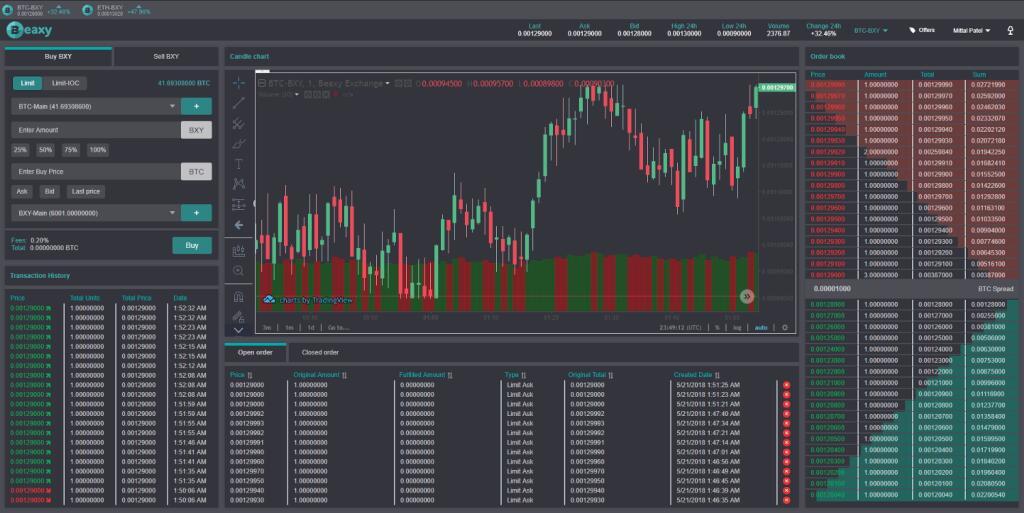Contents
The pattern will slope to the downside within a downtrend on a reversal. Despite continuation or reversal, descending broadening wedges are always bullish. The wedge trading strategy has a signal line, which could be the upper or the lower line. However, if there is a rising wedge pattern, then the signal line would be the lower line. Instead, if you have a descending wedge pattern, then the signal line would be the upper line. A descending broadening wedge does not mark the exhaustion of the selling current, but the buyers’ ambition to take control.
Depending on the educator and educational material you’ve read on chart patterns, wedge patterns may or may not be considered a triangle pattern. Should be placed above or below the opposite side of the ascending or descending wedge from the breakout. Therefore, you should place your stop-loss just above the upper trend line when you are trading a rising wedge pattern.
- If you have no clue about how to trade the broadening wedge chart pattern, don’t worry – you’re not alone.
- A descending broadening wedge is confirmed/valid if it has good oscillation between the two upward lines.
- A right-angled rising triangle is formed by two diverging lines, with the assistance being a horizontal line and the resistance being an oblique bullish line.
- But if you do spot it in uptrends, it means the falling megaphone pattern has served as a continuation pattern.
- You can apply the general rule here – first is that the former levels of support will become new resistance levels, and vice versa.
This price target is gotten by measuring from the start of the pattern. That’ll give your trades good room before price advances or declines to your target. With proper risk management in place, you can still long from support and take profit at resistance. Therefore, you’ll have to define the trend based on your trading strategy.
Break-in Resistance Line:
Falling wedges generally assume a bullish break once the asset price breaks out of the wedge pattern. As with the rising wedges, trading falling wedge is one of the more challenging patterns to trade. A falling wedge pattern indicates a continuation or a reversal depending on the current trend. In terms of its appearance, the pattern is widest at the top and becomes narrower as it moves downward.
The second of three touches should, ideally, touch (rather than ‘come close to’) the trendline. This removes the issue of price forming an upward-sloping channel with an upward spike at the end of the pattern. The widening formation happens when rate change causes a succession of higher highs and lower lows that slowly broaden over time. It is often regarded best forex books to just be observed in topping formations, where it is believed to be the item of bullish investors’ unreasonable expectations. The revenue target is acquired by adding the height of the pattern to the rate at which the marketplace broke through the trendline. Alternatively, you can utilize the prospective resistance location to forecast the target cost .
The chief hint is the two lines moving apart with clear support/resistance. The falling wedge pattern is characterized by a chart pattern which forms when the market makes lower lows and lower best tech stock to buy 2021 highs with a contracting range. When this pattern is found in a downward trend, it is considered a reversal pattern, as the contraction of the range indicates the downtrend is losing steam.
Thus, an ascending pattern always generates a sell signal . You can exit your trade when the market breaks out of the upper trendline or when it reaches the first price target you’ve set. A descending broadening wedge has dynamic support and resistance lines. In a falling wedge, both boundary lines slant down from left to right. The upper descends at a steeper angle than the lower line. Volume keeps on diminishing and trading activity slows down due to narrowing prices.
An ascending triangle is a chart pattern used in technical analysis created by a horizontal and rising trendline. The pattern is considered a continuation pattern, with the breakout from the pattern typically occurring in the direction of the overall trend. A descending broadening wedge does not mark the fatigue of the selling existing, but the buyers’ aspiration to take control.
The trend is usually sideways within the expanding wedge pattern. The broadening wedge is created by a battle between the bulls and the bears. The bulls are trying to push the price up, while the bears are trying to push the price down.

This is why many technical analysts view them as potential turning points in the market. Don’t forget to practice on a demo account until you get comfortable with the pattern. This shift typically occurs after a period of consolidation or range-bound trading. This is a warning sign that the buyers are losing interest and that the trend is going to reverse.
CASE 1: formation of a descending broadening wedge after a trough
A rising wedge is more reliable when found in a bearish market. In a bullish trend what seems to be a Rising Wedge may actually be a Flag or a Pennant requiring about 4 weeks to complete. When the rising wedge appears in an uptrend, and after an extended price move higher. This is a signal that a reversal to the downtrend is likely to happen.

To find a revenue target, include the height of the pattern to the breakout cost. Wait on the rate to discuss the upper trendline of the broadening bottom. Calculate the target rate by including the pattern height to the breakout cost to recognize an exit. That is, the start of the trend is lower than the start of the pattern. You can buy when the price reaches the bottom trendline and offer when the costs transfer to the top trendline. You can likewise sell short at the top of the wedge’s trendline but keep in mind that it is a partial decline, and costs are most likely to rebound higher eventually.
Traders can place a stop below the lowest traded price in the wedge or even below the wedge itself. During the formation of a descending broadening wedge, volumes forex shooting star do not behave in any particular way but they increase strongly when the support line breaks. In a falling wedge pattern, the sellers are losing momentum.
Is Your Risk/Reward Enough?
The descending wedge is a bullish chart pattern that begins with a wide trading range at the top and contracts to a smaller trading range as prices trend down. The descending broadening wedge pattern can extend for extended periods on increasing unpredictability. As the two “arms” are moving apart there’s no “crossing point” to the pattern overall currency strength indicator like there is with a pennant, a wedge or triangle. This makes it hard to think when the pattern may conclude. The descending broadening wedge pattern can extend for extended periods on increasing volatility. Because the two “arms” are moving apart there’s no “crossing point” to the pattern like there is with a pennant, a wedge or triangle.

A descending triangle forms with an horizontal resistance and a descending trendline from the swing highsTraders can… The wedge pattern converges to the smaller price channel. This means that the distance between where a trader would enter the trade and the price where they would open a stop-loss order is relatively tight. Here it can be very easy to get kicked out of the trade for minimum loss, but if the stock moves to the benefit of the trader, it can lead to an excellent return. As with their counterpart, the falling wedge may seem counterintuitive. They push traders to consider a falling market as a sign of a coming bullish move.
How to trade descending broadening wedge?
Therefore, you should wait for a pullback before entering a trade or trail your stop loss to breakeven. The resistance is the level where the sellers are likely to step in and start selling the security. The support is the level where the buyers are likely to step in and start buying the security. Volume levels will then rise significantly upon a breakout . No matter what your level of experience, the expanding wedge can be a valuable tool in your trading arsenal.
Is Broadening Wedge Pattern Bullish or Bearish?
And below the lower trend line when you are trading a descending wedge pattern. Some traders choose to place it outside the signal line and others may place it closer to keep its size smaller. Rising wedge pattern or also called ascending wedge pattern, takes shape after a longer uptrend, when the price makes higher highs and higher lows. All the highs and lows must be in-line, so they can be attached by a trend line.
What is the Difference Between Descending Broadening Wedge and Other Types of Broadening Pattern?
Once the trend lines converge, this is where the price breaks through the trend line and spikes to the upside. There should be a prior trend to revers for the formation of a reversal pattern. A descending wedge is typically forms between 3-6 moths period of time. The broadening descending wedge pattern is formed by two diverging lines that connect a series of lower highs and lower lows. The broadening wedge is a bilateral chart pattern that you can use to spot potential breakouts and short-term trend reversals. A wedge is a structure or pattern with one thick end and one thin end.
Good knowledge of how to trade the descending broadening wedge chart pattern will do a lot for you. If the descending broadening wedge formation emerges in a downtrend, then the trend will reverse. When the falling wedge appears in an uptrend, this signals the continuation of the previous trend .